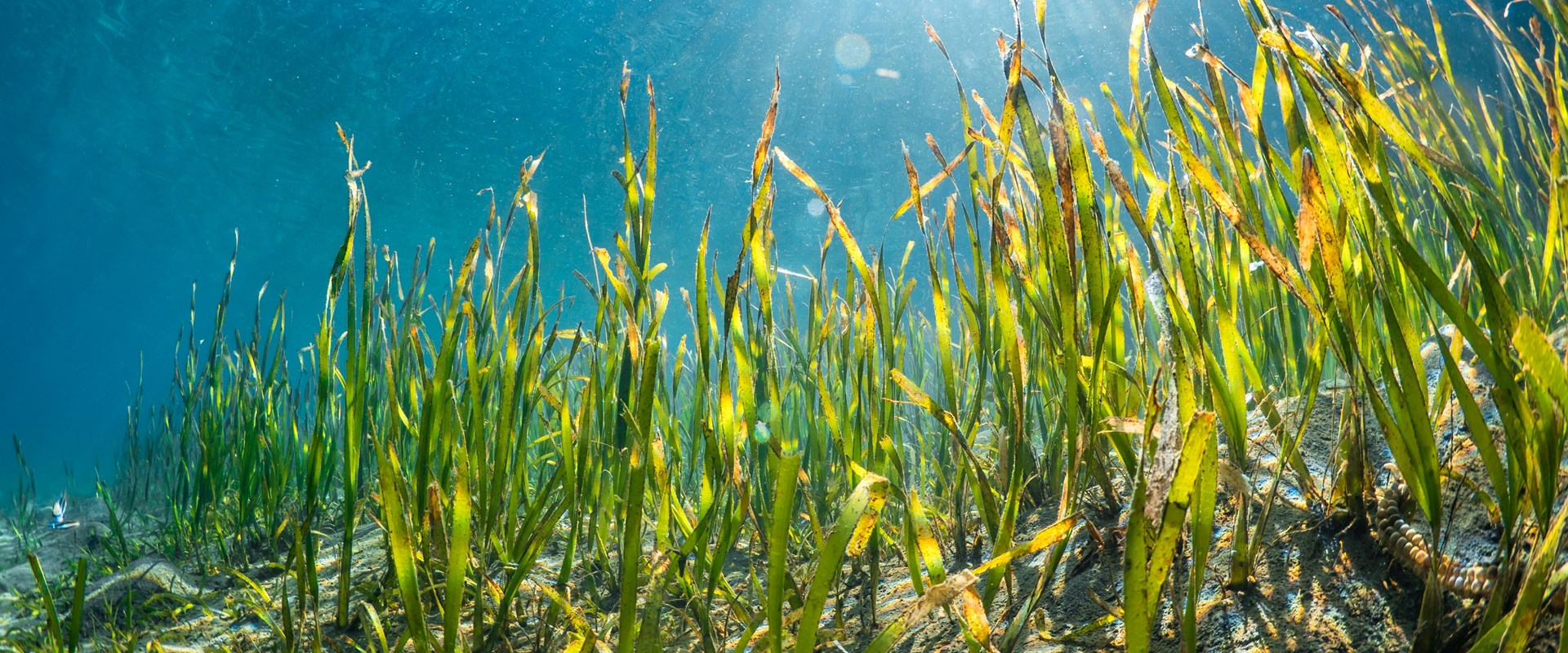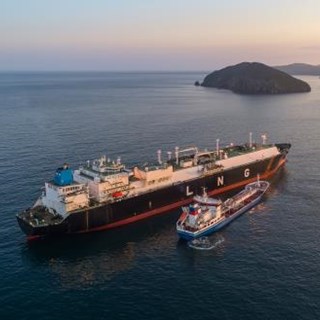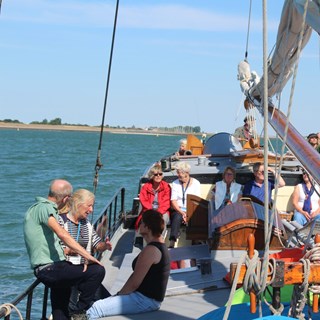
Why is seagrass so important?
Seagrass provides a vital ecosystem and habitat to our marine environment and is valuable for many reasons.
Seagrass is a marine plant that occupies shallow near-shore environments. Seagrass is the only flowering plant able to live in seawater and pollinate while submerged. It often grows in large groups, creating underwater meadows.
Seagrass provides a vital ecosystem and habitat to our marine environment and is valuable for many reasons: its root structure stabilises the sediment and can photosynthesise, turning the sediment and the habitat into a rich, diverse ecosystem; it provides food and shelter for a wide variety of marine animals (including cuttlefish, seahorses) and act as a nursery and hatchery for many commercial and economically important fish species (such as cod, which spend critical periods of their lives in seagrass).
A significant feature and why it’s a key habitat is its ability to take carbon from the marine environment and emit oxygen. Seagrass stores carbon differently to our terrestrial forests and at a greater rate as it, and other blue carbon habitats, like coastal wetlands, sequester carbon into the sediment where it can’t remineralise back into the carbon cycle.
By restoring this important ecological feature, we also restore community benefits from these habitat. Seagrass provides carbon sequestration, climate regulation, fisheries support (nurseries and hatcheries) and other biodiversity features – all of this increases tourism (through activities like bird watching and scuba diving), the cleaning of coastal waters and sediment stabilisation, and even reduces the impact of storms and bad weather.
Globally, estimates suggest that we lose an area of seagrass around the same size as two football pitches every hour. Seagrass currently occupies 0.1% of the seafloor yet are responsible for 11% of the organic carbon buried in the ocean. An analysis of 215 published studies showed that seagrass habitat has disappeared worldwide at a rate of 110 km2yr-1 between 1980 and 2006. Of the 72 seagrass species listed in the IUCN Red List of Threatened Species, three are Endangered.
Protecting what is left is vital, and if we can restore what has been lost, there is potential to have social, economic, and environmental benefits to our coastal waters.
Case Study:
We have been working on seagrass in Australia for almost two decades, where we have been a part of a novel method for seagrass transplantation. There, we have worked on the ‘Albany Port Expansion Project’, where preliminary work was undertaken to support 1 hectare of seagrass restoration within the Princess Royal Harbour. An additional 0.4 hectares of seagrass was transplanted in the Princess Royal Harbour for the Albany Waterfront Harbour Development Project. The Seagrass Rehabilitation Plan was one of the first seagrass transplantation plans developed and authorised by Western Australia Environmental Protection Authority, and significant improvements have been developed during this 10-year journey. In 2020, the EPA Western Australia confirmed the successful completion of this project. We transplanted over 30,000 seagrass sprigs and enabled the sequestration of approximately 14 tonnes of carbon across 1.4 hectares of restored seagrass, without any loss of the habitats to be offset.
Seagrasses are broadly distributed in most of the world’s oceans and seas, extending right up into the Arctic Circle and as far south as New Zealand. Seagrass grows in salty and brackish (semi-salty) waters around the world, typically along gently sloping, protected coastlines. Because they depend on light for photosynthesis, they are mostly found in shallow depths where light levels are high. Strong wave action, nutrient concentration, ice scouring, depth and water turbidity are some of the limiting factors to the distribution of seagrasses.
Seagrass extent in the UK has declined dramatically over the past century, with recent estimates indicating that at least 44% has been lost since 1936. Of which, 39% (17% of all UK seagrass) has been eradicated since the 1980s alone. This extensive seagrass loss is the result of a complex combination of factors that have fundamentally altered the UK coastline. Coastal development, through physical removal of the habitat from activities such as dredging and fishing, as well as poor water quality remain two of the biggest issues for Seagrass. Extensive outbreaks of the seagrass wasting disease, Labyrinthula zosterae, have been ascribed as another cause of seagrass loss in Western Europe and the UK in the 1930s, and is likely the result of environmental degradation, and the cumulative impacts of poor water quality.
Due to their shallow coastal location, seagrass beds often come into direct contact with humans, such as for anchoring of boats, fishing, and recreational activities. They also often come into direct contact with coastal development areas, causing conflict between conservation interests and commercial development. Indirect impacts from land activities, including sedimentation, eutrophication, and run-off of chemicals such as herbicides, further threaten seagrass health and survival through water pollution. Once destroyed, seagrass ecosystems do not quickly recover as waves and currents erode the exposed seabed and inhibit regrowth.
Many organisations around the UK are tapping into the potential of seagrass. For example, Save Our Seabed is working with various facilities such as the Plymouth National Marine Aquarium that have labs to grow seedlings and can trial the best techniques to ensure the successful restoration of seeds and plantlets into places where they have been historically lost.
We currently have a research and development project underway, exploring avenues for seagrass for customer sites.
Seagrass produces oxygen, cleans our coastal water, absorbs greenhouse gas emissions, and provides habitats for many marine species – all of which which help to keep our ocean healthy which stabilises the climate.
Lack of local public appreciation of the value of seagrass habitat is perhaps the greatest risk to its ongoing survival, as public opinion can impact restoration funding, policy, stakeholder engagement and involvement.
At home we can be more mindful about what we put in our waters and our individual impact. For example, what fertilisers you use in your garden, what is put down the drain, anchoring locations, bait digging for fishing, and so on.

N/A
With the opportunity to travel to many and diverse locations: countries, ports, deep sea or inland vessels, on the ocean or riverside, the role of a marine surveyor is varied, dynamic, challenging and fascinating.

Louise Bruce
Discover the Cockburn Sound project in Western Australia, where our innovative framework incorporating the BMT DEEP data platform and TUFLOW modelling software supports informed decisions, sustainable development, and enhanced environmental stewardship in this ecologically and commercially valuable region.

N/A
Bas Dijk joins BMT Netherlands B.V. as Marine Surveyor. Bas is stationed in BMT’s new Rotterdam office on the Rivium Business park, Capelle a/d IJssel.

N/A
As a volunteer and coordinator for the Zeeland region of the Vaarkracht Foundation, Ad de Klerk, Marine Surveyor at BMT in the Netherlands has, for years, been committed to enabling cancer patients and their relatives to escape reality and gain new energy.